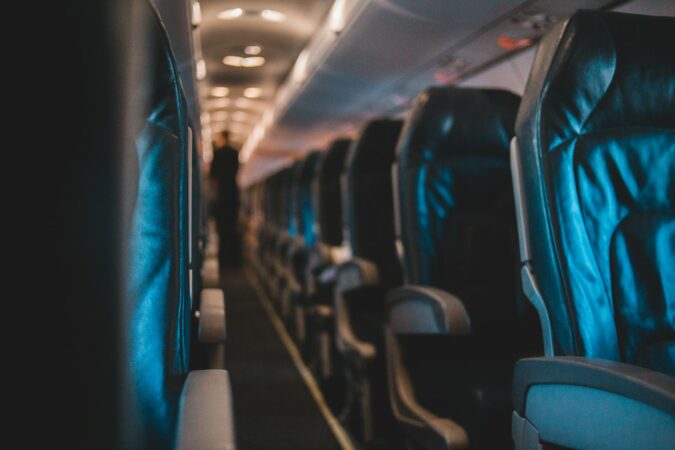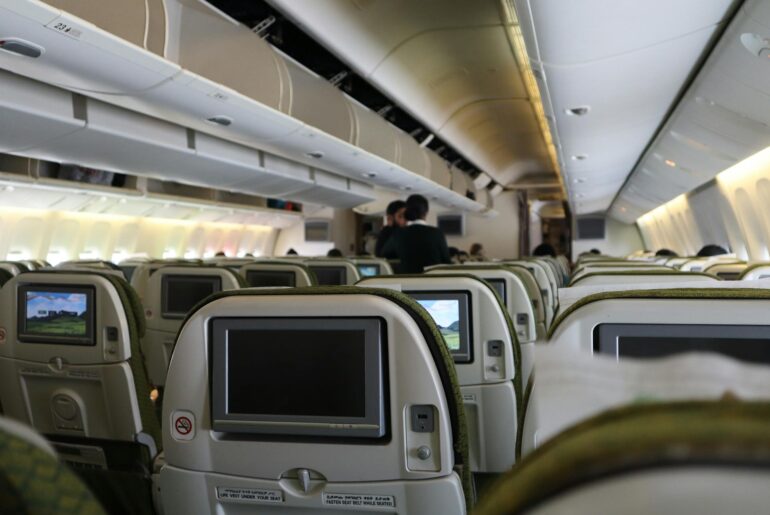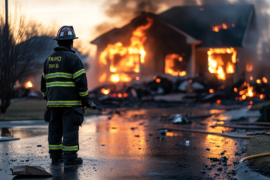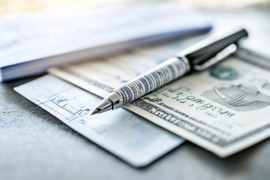This article may contain references to products or services from one or more of our advertisers or partners. We may receive compensation when you click on links to those products or services. Nonetheless, our opinions are our own.
The information presented in this article is accurate to the best of our knowledge at the time of publication. However, information is subject to change, and no guarantees are made about the continued accuracy or completeness of this content after its publication date.
Although flying remains one of the safest ways to travel, many passengers still wonder which seats offer the best protection during emergencies. While no seat guarantees survival, research into past aviation incidents has uncovered patterns that can guide smarter seat selection and improve safety awareness.
Seat Location and Survival Trends
Rear Seats
Studies analyzing crash data suggest that passengers seated toward the back of the aircraft may have slightly better chances of survival. A notable analysis of government aviation records showed survival rates were highest in the rear third of the plane compared to seats over the wing or at the front. However, outcomes vary significantly depending on the nature of the incident.
Middle Seats in Rear Rows
Middle seats toward the rear may provide added protection by being surrounded on both sides, potentially reducing impact exposure. In simulated crash tests, these positions have occasionally shown more favorable outcomes.
Seats Near Emergency Exits
Passengers seated within five rows of an emergency exit have a statistically higher chance of evacuating quickly. In situations involving smoke, fire, or water landings, quick exit access can make a critical difference.
Other Factors That Influence Survival
Aircraft Type and Safety Design
Modern commercial planes are built with stringent safety standards. Factors such as aircraft design, structural reinforcements, and crash absorption zones play a vital role in passenger protection. Larger aircraft typically have more safety redundancies and undergo strict certification processes.
Phase of Flight
The most dangerous moments of flight are takeoff and landing. These phases involve the most maneuvering and the least time to respond. Certain crash records have linked higher risk to seats near the wings due to proximity to fuel tanks.
Passenger Behavior and Awareness
Passengers who review safety cards, watch briefings, and identify the closest exit rows are often better prepared to respond in an emergency. Awareness and calm action can increase chances of survival more than seat placement alone.

Choosing a Safer Seat
While comfort and cost often guide seat selection, travelers who prioritize safety may consider the following options:
- Rear Rows: Often linked to higher survival rates in specific crash studies
- Over-Wing Seats: Offer structural support, though close to fuel storage
- Exit Rows: Best for fast evacuation, though may come with added responsibility
- Aisle Seats: Allow easier movement during evacuations
- Window Seats: More isolated, which may delay exit in emergencies
Whenever possible, review the seat map of your aircraft and consider the number of rows between your seat and the nearest exit.
Voted "Best Overall Budgeting App" by Forbes and WSJ
Monarch Money helps you budget, track spending, set goals, and plan your financial future—all in one app.
Get 50% OFF your first year with code MONARCHVIP
Built-In Aircraft Safety Features
Structural Engineering
- Wings and fuselage are reinforced to handle stress and impact
- Seats are anchored to withstand crash-level forces
- Cabin layout includes shock-absorbing design elements
Emergency Infrastructure
Aircraft are equipped with
- Multiple exits and escape slides
- Floor lighting for visibility
- Overhead masks and flotation devices
- Crew trained to evacuate all passengers within 90 seconds
What Passengers Can Do to Stay Safe
- Pay attention during safety demonstrations
- Read the safety card for aircraft-specific details
- Locate and count rows to the nearest exit
- Keep seatbelts fastened while seated
- Secure loose items to prevent injury
Final Thoughts
While aviation accidents are rare, being informed and alert can significantly improve your odds in an emergency. Seat location, exit access, and personal preparedness all play a role in safety. Choosing the right seat and knowing how to respond can turn a few small decisions into life-saving advantages.
Frequently Asked Questions
What’s the safest seat on a plane?
Some data suggest seats in the rear third have higher survival rates, but this can vary by crash type.
Aisle or window what is better for emergencies?
Aisle seats allow faster evacuation. Window seats offer more privacy but may slow exit in a crisis.
Does the plane model affect safety?
Yes. Larger, modern aircraft follow strict safety regulations and are built with multiple safety systems.
How can I improve my safety while flying?
Know your exit routes, stay buckled in, pay attention to safety instructions, and follow crew guidance.

Reviewed and edited by Albert Fang.
See a typo or want to suggest an edit/revision to the content? Use the contact us form to provide feedback.
At FangWallet, we value editorial integrity and open collaboration in curating quality content for readers to enjoy. Much appreciated for the assist.
Did you like our article and find it insightful? We encourage sharing the article link with family and friends to benefit as well - better yet, sharing on social media. Thank you for the support! 🍉
Article Title: How to Choose the Safest Seat on a Plane During Emergencies
https://fangwallet.com/2025/07/26/how-to-choose-the-safest-seat-on-a-plane-during-emergencies/The FangWallet Promise
FangWallet is an editorially independent resource - founded on breaking down challenging financial concepts for anyone to understand since 2014. While we adhere to editorial integrity, note that this post may contain references to products from our partners.
The FangWallet promise is always to have your best interest in mind and be transparent and honest about the financial picture.
Become an Insider

Subscribe to get a free daily budget planner printable to help get your money on track!
Make passive money the right way. No spam.
Editorial Disclaimer: The editorial content on this page is not provided by any of the companies mentioned. The opinions expressed here are the author's alone.
The content of this website is for informational purposes only and does not represent investment advice, or an offer or solicitation to buy or sell any security, investment, or product. Investors are encouraged to do their own due diligence, and, if necessary, consult professional advising before making any investment decisions. Investing involves a high degree of risk, and financial losses may occur including the potential loss of principal.
Source Citation References:
+ Inspo
There are no additional citations or references to note for this article at this time.










































